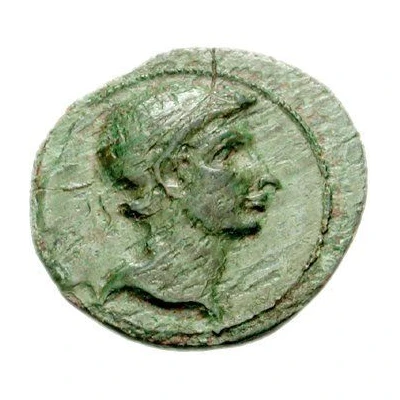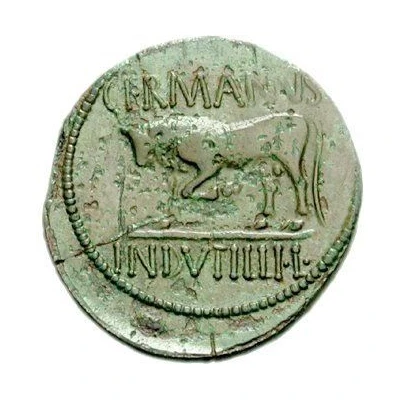


© Classical Numismatic Group, Inc.
Quadrans GERMANVS INDVTILLI F
| Bronze | 2.5 g | 19 mm |
| Issuer | Reims (Gallia Belgica) |
|---|---|
| Emperor | Augustus (Caius Octavius) (27 BC - 14 AD) |
| Type | Standard circulation coin |
| Years | 1-14 |
| Value | Quadrans (1⁄64) |
| Currency | Denarius (49 BC to AD 215) |
| Composition | Bronze |
| Weight | 2.5 g |
| Diameter | 19 mm |
| Shape | Round (irregular) |
| Technique | Hammered |
| Demonetized | Yes |
| Updated | 2024-10-06 |
| Numista | N#247716 |
|---|---|
| Rarity index | 100% |
Reverse
Bull butting left.
Script: Latin
Lettering: GERMANVS INDVTILLI F
Translation: Germanus Indutilli [Libertus].
Comment
Jean-Marc Doyen, a researcher at the University of Lille III, has reassigned this bronze to the Remi:
"This sometimes classic style bronze, made in an alloy containing an average of 12% zinc (orichalcum) is a semis and not a quadran as has long been assumed. It is cut to 1/108th of a pound (9 dozen) The distribution map shows a circulation fairly faithfully following the limits of the new province of Gallia Belgica, for which it serves as an additional coinage. Traditionally classified among the Gallic coins, this bronze is in fact a provincial issue made in Reims under imperial control by a Remian prince named Indutillus".
Interesting fact
One interesting fact about this coin is that it features the image of a Roman emperor, likely Germanicus, on one side, and a depiction of a Gallic warrior on the other. This suggests that the coin was minted during a time of Roman occupation in Gaul (modern-day France), and that the Roman authorities were attempting to promote their rule and influence over the local population through the use of currency. Additionally, the fact that the coin is made of bronze, a relatively cheap and common metal, suggests that it was intended for everyday use by the general population, rather than being a high-value coin reserved for the wealthy elite.